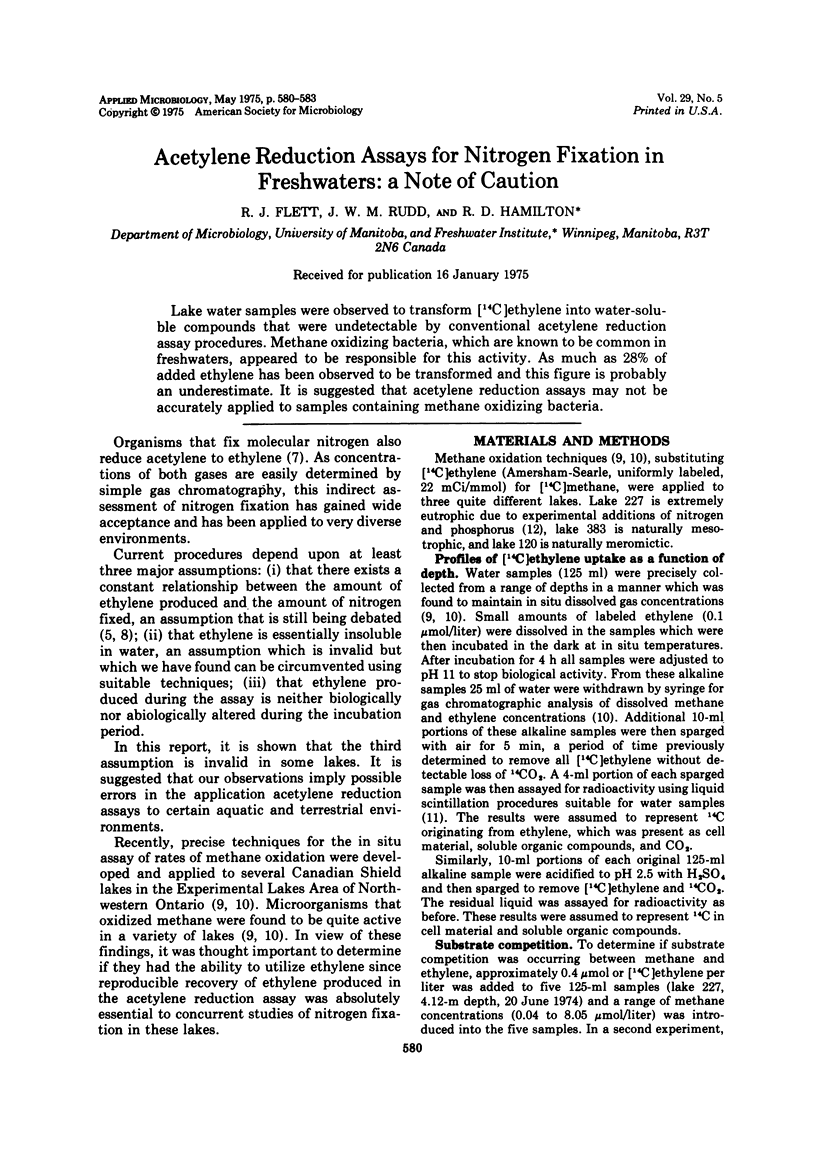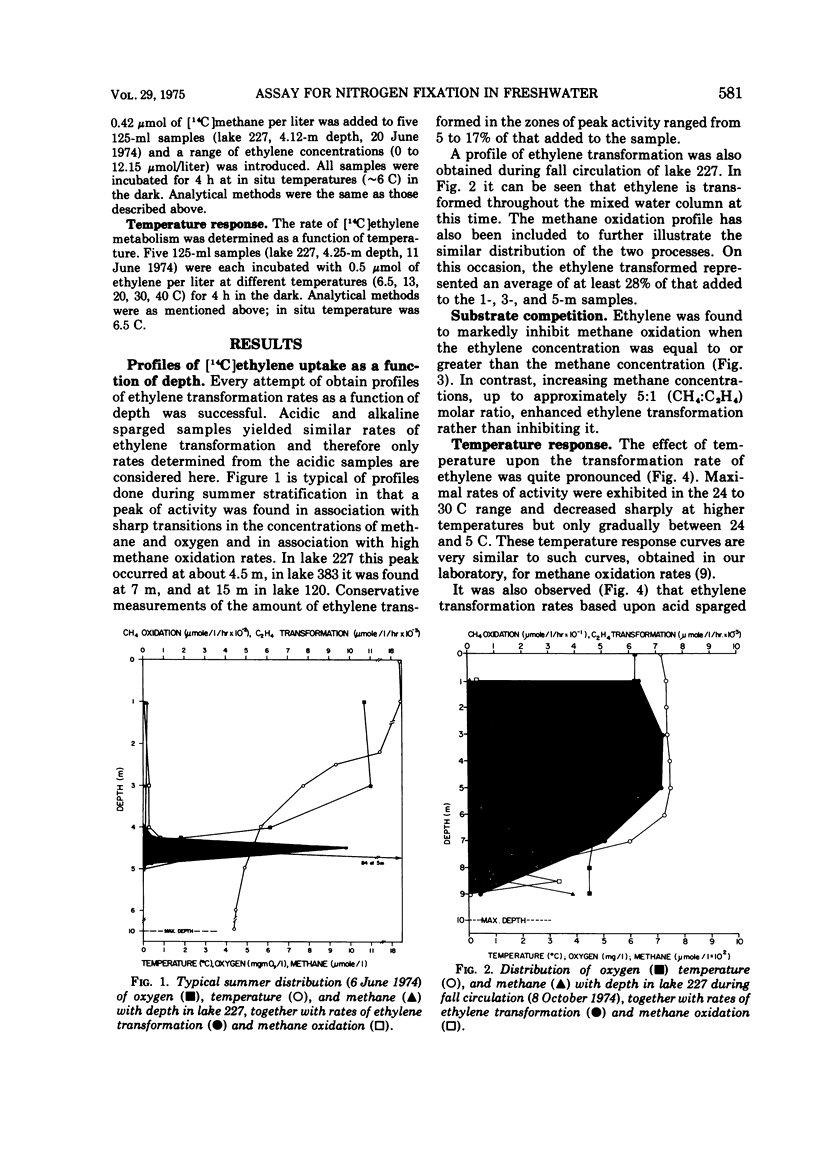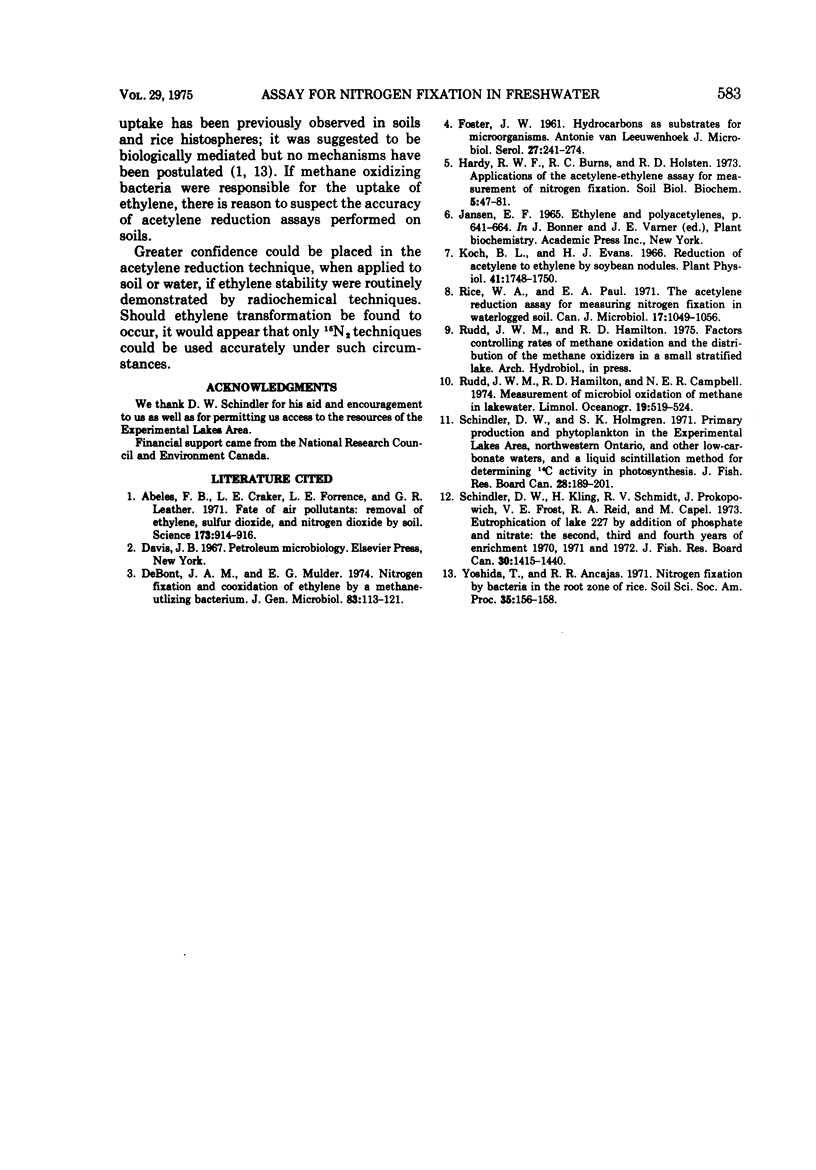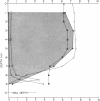Abstract
Lake water samples were observed to transform [14C]ethylene into water-soluble compounds that were undetectable by conventional acetylene reduction assay procedures. Methane oxidizing bacteria, which are known to be common in freshwaters, appeared to be responsible for this activity. As much as 28% of added ethylene has been observed to be transformed and this figure is probably an underestimate. It is suggested that acetylene reduction assays may not be accurately applied to samples containing methane oxidizing bacteria.
Full text
PDF



Images in this article
Selected References
These references are in PubMed. This may not be the complete list of references from this article.
- Abeles F. B., Craker L. E., Forrence L. E., Leather G. R. Fate of air pollutants: removal of ethylene, sulfur dioxide, and nitrogen dioxide by soil. Science. 1971 Sep 3;173(4000):914–916. doi: 10.1126/science.173.4000.914. [DOI] [PubMed] [Google Scholar]
- Koch B., Evans H. J. Reduction of acetylene to ethylene by soybean root nodules. Plant Physiol. 1966 Dec;41(10):1748–1750. doi: 10.1104/pp.41.10.1748. [DOI] [PMC free article] [PubMed] [Google Scholar]
- Powell M. R., Doebbler G. F., Hamilton R. W., Jr Serum enzyme level changes in pigs following decompression trauma. Aerosp Med. 1974 May;45(5):519–524. [PubMed] [Google Scholar]
- Rice W. A., Paul E. A. The acetylene reduction assay for measuring nitrogen fixation in waterlogged soil. Can J Microbiol. 1971 Aug;17(8):1049–1056. doi: 10.1139/m71-166. [DOI] [PubMed] [Google Scholar]




